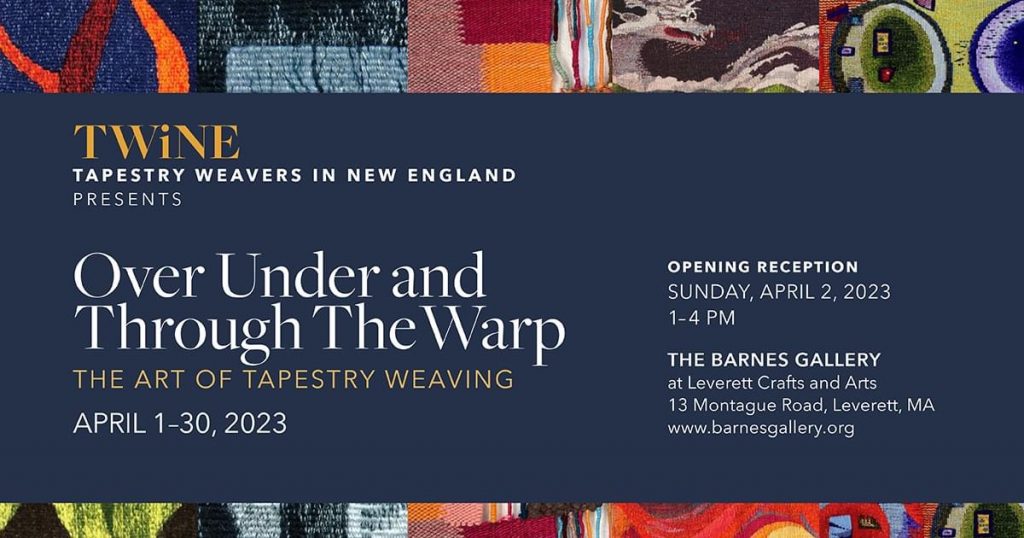…a well used phrase from my parents’ and grandparents’ generations. It served them well through two world wars and the depression. It’s gaining favor again, as our affluent culture has had so much consumerism and so many things sent to landfills. Some of us are trying to make do with less, and repurposing the things we have. The culture of recycling things, reinventing uses, and making do has never gone out of favor in the small islands where Bob and I are living this winter. The people here have had no choice about that!
Bob and I are in Dominica now, the ‘nature island.’ Indeed, the rainforests here are as unspoiled and pristine as you could possibly imagine. It’s been just over two years since this island was flattened during hurricane Maria, which rapidly escalated to a category five hurricane. Bob and I visited here about two months after Maria occurred. The entire island was brown, with not a leaf left in the rainforest. Along with many other cruisers, we delivered tarps for use on houses and buildings that had lost roofs. Here we are again, barely more than two years later, and the rainforest is healed, but many man made structures are still covered with tarps that have decayed and shredded over the past two years. Patrickson Wallace, who was our guide for a day tour of part of the rainforest told us that he was without electricity for 10 months. At least he now has power and a real roof. Meanwhile, nature heals herself faster and more thoroughly. I am currently reading Overstory by Richard Powers. Being here is a wonderful environment for reading this book. The link will take you to Barbara Kingsolver’s review in the New York Times.
Dominica is a small island (17 miles wide by 29 miles long) that rises straight out of the sea with volcanic mountains covered in rainforest. This island has 365 rivers, and many waterfalls. A small group of cruisers that we’ve met over the past few years spent a day together with our guide to visit a number of waterfalls. We were lucky to be almost alone at Emerald Pool where we swam at the base of a tall waterfall.
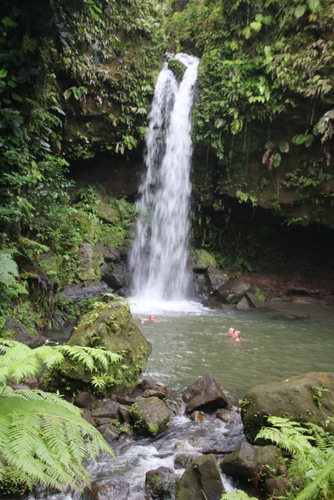
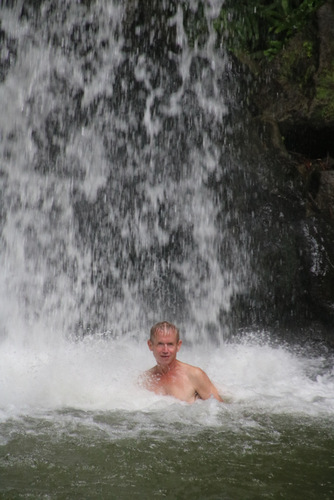
Then we visited Trafalgar Falls and had lunch on a deck overlooking another waterfall that made us feel as though we were high up in tree house! We ended the day at a hot spring fed from volcanoes.
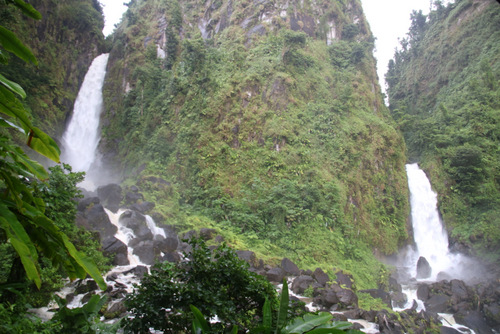
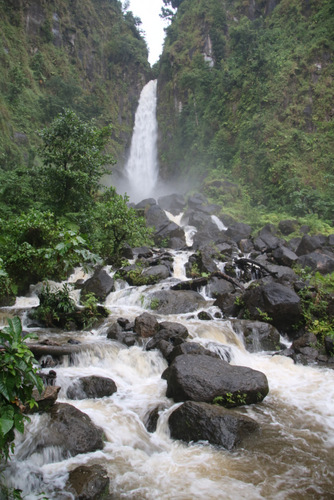
I took a video of Trafalgar Falls, but I don’t have enough bandwidth to upload it. Hopefully I can get that done sometime soon from someplace onshore!
Another visit we took was to a small, family run chocolate factory. The estate grows both cocoa beans and coffee beans. The chocolate is made entirely by hand, and the daughter of the founder took us on a tour of the process. So… speaking of using what’s available…. the father and founder of this endeavor used wood from the property, that was mostly downed in hurricane Maria, to make a small living space above the chocolate sales area for his daughter. Wow! Sometimes making do turns into something spectacular. All the exterior wood–railings and shingles–and all the wood in the interior came from this property. The owner sold Bob two very nice boards of Galba, the local name for this hardwood. I will let Bob figure out if there is a more familiar name to us for what he got.
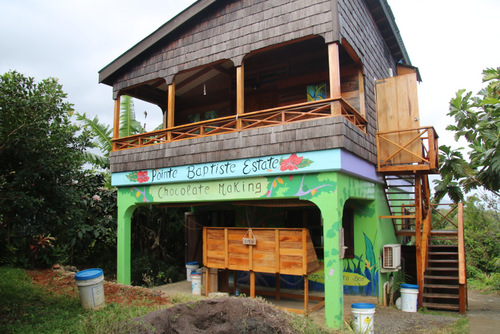
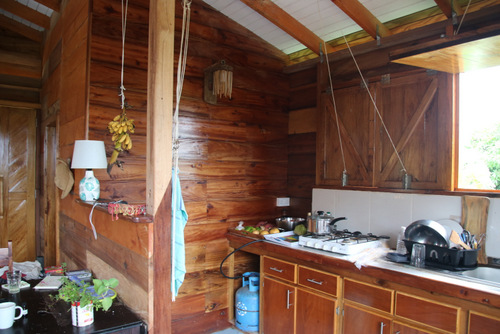
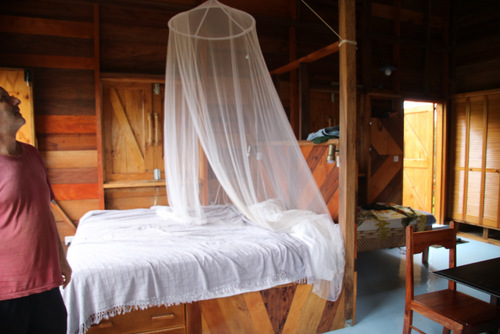
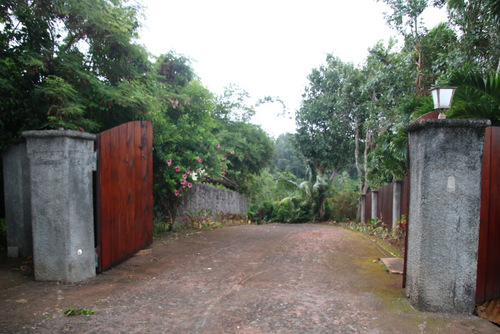
Onboard our floating house, Bob and I have done a moderate amount of mending and making do. Our refrigeration is failing. We need a new compressor, or perhaps an entirely new system. Our system is not made anymore, and Pandora has a 24v system since she was built in Finland. Someone in California is cobbling something together for us. He’ll ship it to St. Lucia sometime in the next fews days/weeks. We’ll sail there, and either Bob will install it or he’ll find a local technician to do it. In the meantime, we mostly buy each day’s food, and we plan to live off pantry items if (when?) it fails.
On a more personal level, both Bob and I have had to repair some of our clothing! We can’t just pop down the road to the local Marshalls or a local shoe store to replace the clothing that has fallen apart. I bleached one of my white shirts which had become dingy from so much sunscreen on the arms. Can you believe it? Sunscreen turns cotton a very odd yellow. I must not have rinsed out the bleach well enough because the fabric at the neckline just disintegrated while the shirt dried on a line. And of course the decayed fabric did not occur on a seam, and of course I don’t happen to have any white thread on board. I had to make peace with using pale blue thread for the repair. It’s not quite as discreet a mending job as I’d like. So another adage came to mind: if you can’t hide it, decorate it!
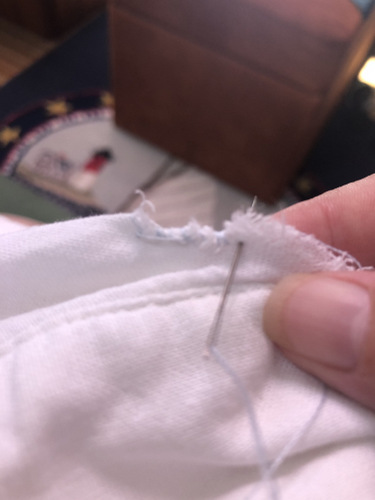
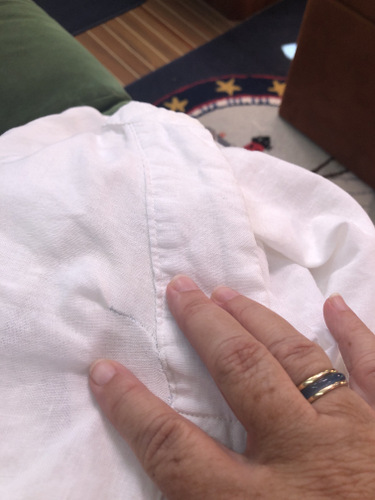
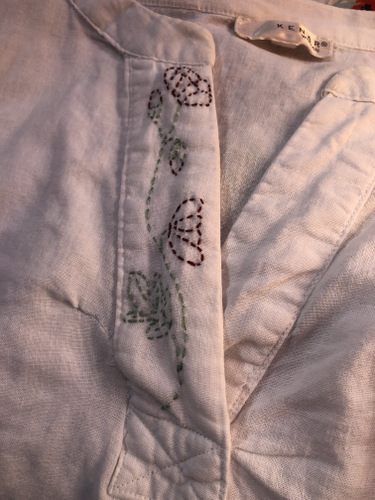
I do have quite a few colors of embroidery thread onboard, so I had another run (with running stitch) at poppies. I do love poppies!
Bob has found that his best walking shoes (Tevas) have delaminated on the soles….both shoes, not just one! He happens to keep some rubber cement onboard, so he peeled apart the layers of the shoes and used a small paint brush to cover each delaminated layer with rubber cement. In this photo he has just finished clamping the shoes, hoping that the pressure will make the glue adhere better. I guess we’ll find out tomorrow when he tries them out walking up to a Fort Napoleon.
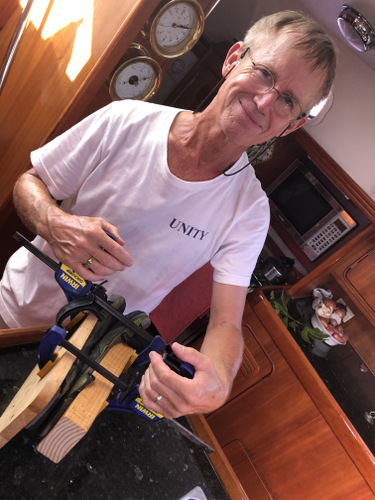
The first time I visited Dominica I bought small baskets with lids for the members of my basket group. I was told that the baskets were made here, but I wasn’t sure I believed it. And I didn’t ask enough questions! On this visit, I am seeing many more baskets!–some of them are exquisite. I asked some questions! There is a native culture here called the Kalinagos who live in their own community. They are known for making baskets out of a type of reed plant that some early native settlers brought with them from South America. The first of these settlers may have arrived on Dominica as early as 500 bce, a full millennia before the French claimed Dominica as their own in 1635. Along with baskets, the Kalinago make items out of gourds and coconuts, as well as making dugout canoes and throwing pottery.
The basket materials come from a reed plant called larouma. The reeds are shaved into 1/4″ staves and 1/8″ weavers, and are often dyed with natural dyes in brown, black, blue, and yellow to create designs with the natural tan. I’m so glad that I learned a bit more about these basket and the people who make them. If our refrigerator holds out a bit longer and if the weather keeps us pinned here, we’d love to visit the Kalinago Territory here in Dominica. Mother Nature will make that call for us.
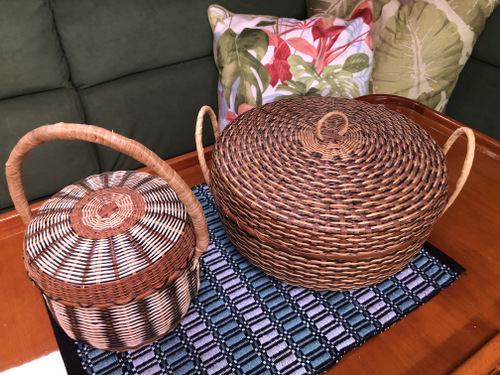
We’ll see what the next few days bring. Our weather router predicts that we’ll be here in high winds for some time longer. Meanwhile, Carnivale will start next week in Fort de France, Martinique, and we hope to be there! We cannot make any definite plans since the weather controls our destiny. We’ll have to see what comes and make do.

